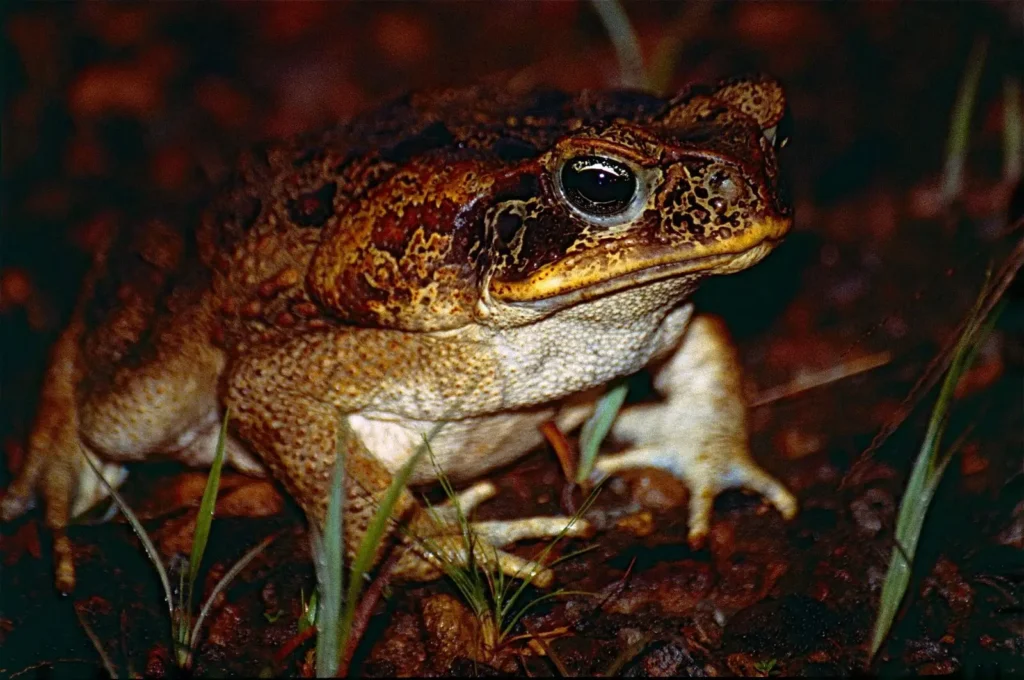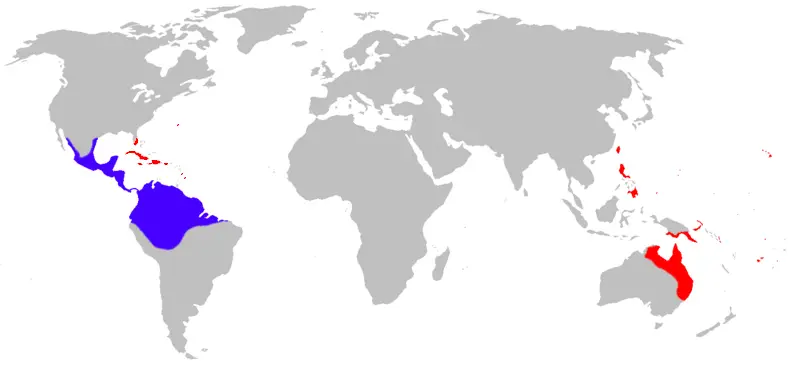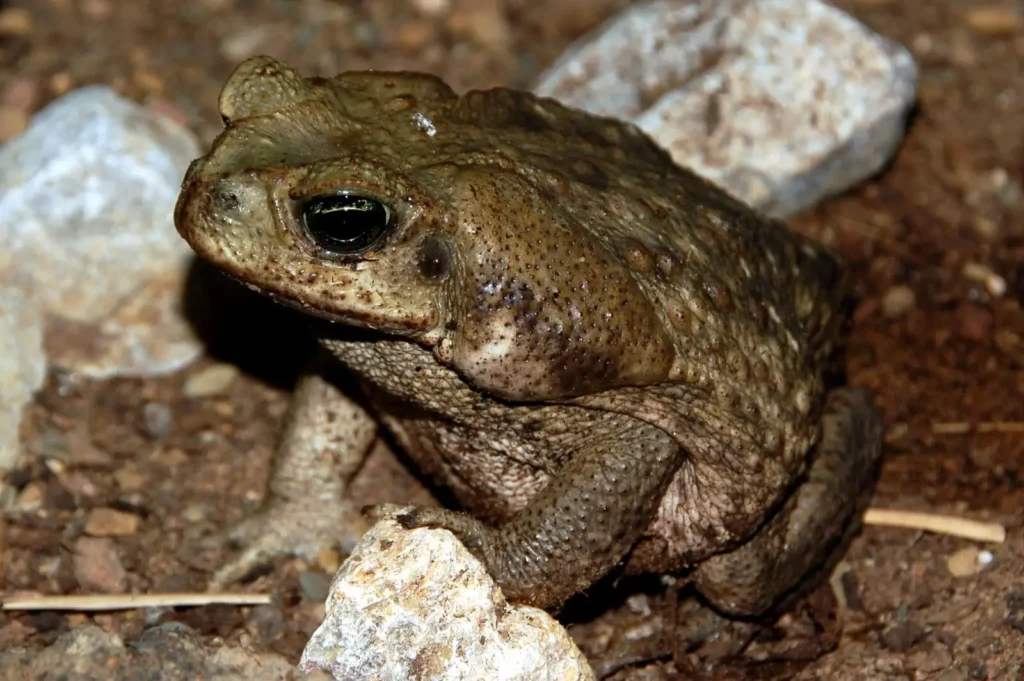Toad-aha (Rhinella marina, earlier Bufo marinus) is one of the biggest and most dangerous frogs in the world. She became an invasive specieswhich threatens the ecosystems of many countries.
📌 Why aha-unique?
✔ Gigantic dimensions – up to 25 cm and more than 2.5 kg
✔ Toxic - secretes strong toxins that are deadly to many predators
✔ Prolific - puts it off up to 30,000 eggs at a time
✔ An invasive species - destroys local fauna without natural enemies
✔ Smart and hardy - adapts to different conditions
📌 Initially, the agu frog was introduced to control sugar cane pests, but it turned into an environmental disaster.
Let's consider biology, behavior, impacts on ecosystems, and ways to control this unique species.

Scientific classification
✔ The Kingdom: Animals (Animalia)
✔ Type: Chordal (Chordata)
✔ Class: Amphibians (Amphibia)
✔ Row: Tailless ones (Anura)
✔ Family: Ropukhovye (Bufonidae)
✔ Gender: Rhinella
✔ View: Rhinella marina
📌 Previously, this species was classified in the genus Bufo, but then the classification was changed.
Appearance and features of the structure
🎨 Characteristic features:
✔ Massive bodycovered with warty skin
✔ Large venom glands (parotids) behind the eyes
✔ Heads are flattened, with a wide mouth
✔ The eyes are golden brown with horizontal pupils
🔹 Sizes
✔ Length 10-25 cm, record-38 cm
✔ Weight up to 2.65 kg
🔹 Color scheme
✔ Brown-gray or olive with dark spots
✔ The belly is lighter, with gray-brown markings
📌 Females are usually larger than males.

Habitat and invasion
🌍 Where does it live naturally?
✔ Central and South America - from Mexico to Brazil
🌏 Where was she taken?
✔ Australia, Philippines, Japan, Hawaii, Caribbean, USA (Florida, Texas)
✔ Reason for delivery: pest control of sugar cane plantations
❗ Effects:
✔ Destroys local fauna – eats everything he can swallow
✔ Has no natural enemies – toxic to many animals
✔ Captures new territories – it lives even in urban areas
📌 In Australia, agas breed uncontrollably, threatening the local ecosystem.
The toxicity of the aga frog
💀 What toxin does aha produce?
✔ Bufotoxins - deadly to many animals
✔ Parotid glands they emit a thick white poison when threatened
✔ The poison contains cardiotoxins affecting the heart
🔹 Who can poison kill?
✔ Dogs, cats, snakes, lizards, crocodiles
✔ Some mammals, including humans
📌 Some carnivores, such as crows and some predatory mammals, have learned to eat ag without venom glands.
Lifestyle and behavior
🌙 Nocturnal predator - active mainly at night
🐾 Pantophagy - eats insects, rodents, snakes, small amphibians
🏞 It lives in moist forests, savannas, and urban reservoirs
📌 In Australia, aga frogs spread over 40 km a year!

Reproduction and development
💖 Record fertility!
✔ Female lays eggs up to 30,000 eggs at a time
✔ Caviar and tadpoles too toxic ones
✔ Development – 3-4 weeks before the frog stage
📌 Aga frogs can live up to 15 years in nature, up to 20 years in captivity.
Keeping in captivity
🟡 Basic requirements:
✔ Terrarium – from 100 liters
✔ Temperature – 24–28°C
✔ Humidity – 50–80%
✔ Soil - coconut fiber, moss
✔ Light "no need, night toad
🍽 What to feed?
✔ Beetles, cockroaches, crickets, rodents
✔ Special amphibian feeds
📌 It is important to avoid contact with toxic glands!
Aga frog as a threat to ecosystems
❗ Main issues:
✔ Displaces native frog species
✔ Poisons predators trying to eat it
✔ It even eats small mammals and birds
🛡 Fighting methods:
✔ Control of reproduction
✔ Use natural enemies (where possible)
✔ Capture and destruction in invasive zones
📌 In Australia, ag extermination programs are being implemented to preserve local fauna.

Interesting facts about the aga frog
💡 This is the largest frog in the world by weight!
💡 Its venom is used in traditional medicine and even in shamanic rituals
💡 Some people breed ahs as exotic animals
💡 Scientists are investigating their venom to create medicines
Conclusion
Frog-aha – amazing but dangerous creature. Her huge size, venom and the ability to reproduce quickly we made it environmental threat in many countries.
🔥 Aha-this is an example of how reckless human intervention can lead to disastrous consequences for nature! 🐸🌍
